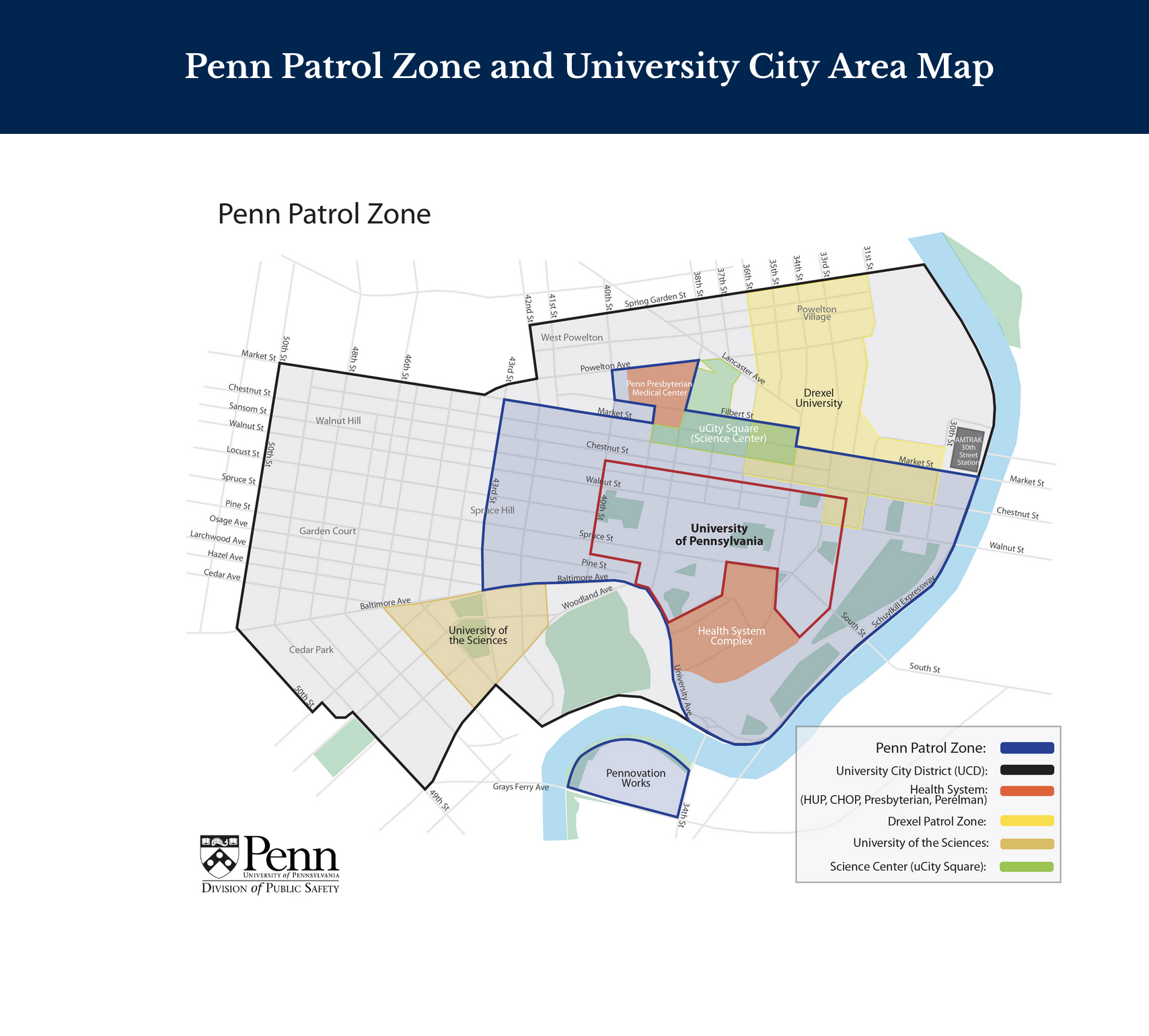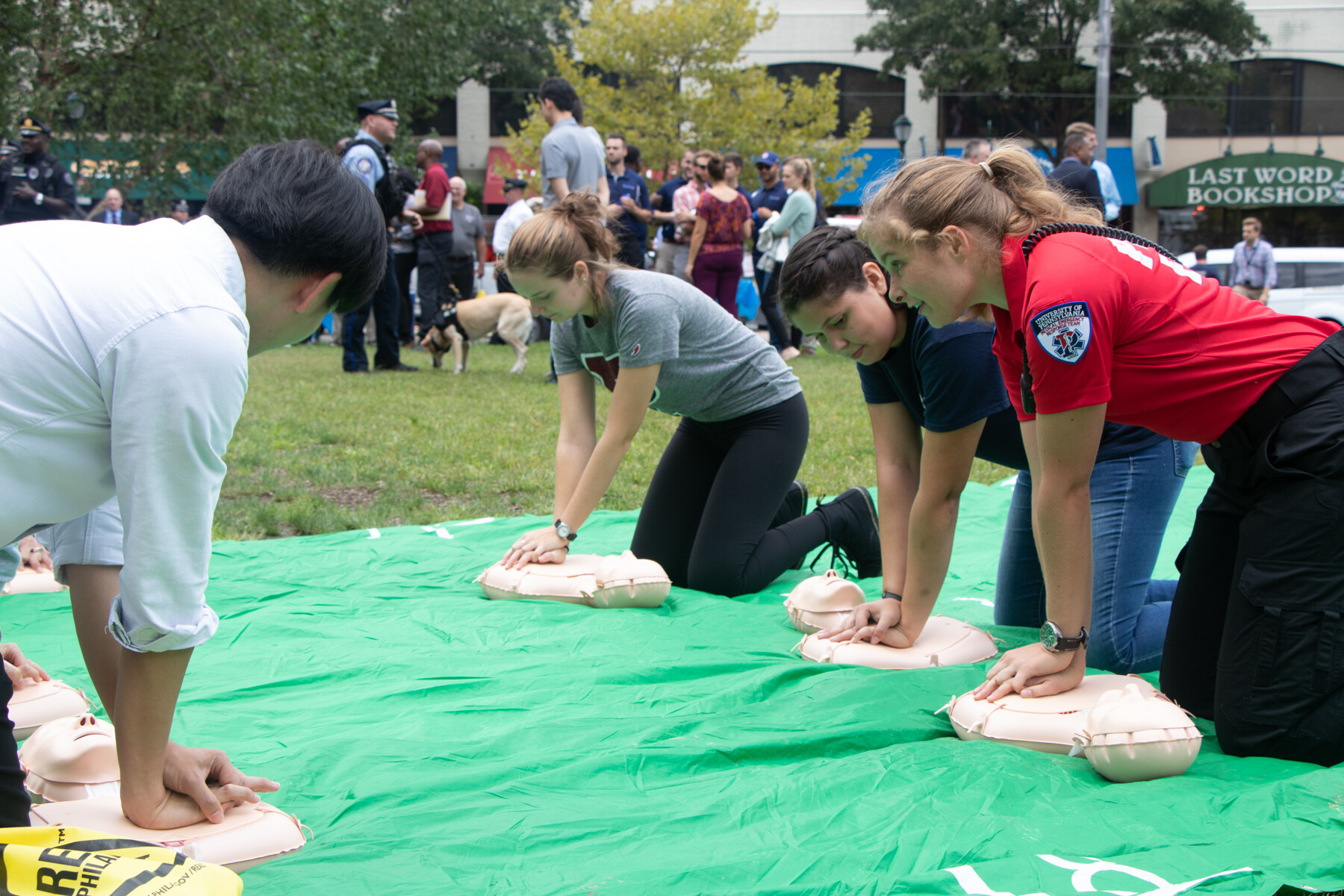
(From left) Doctoral student Hannah Yamagata, research assistant professor Kushol Gupta, and postdoctoral fellow Marshall Padilla holding 3D-printed models of nanoparticles.
(Image: Bella Ciervo)
As part of its annual Life-Saving Measures event, the Division of Public Safety (DPS) hosted a live side-by-side controlled “burn” of a dorm room model on Hamilton Field to show how “Sprinklers Save Lives.”
All of Penn’s on-campus residences have sprinkler systems, and the demonstration illustrated the importance of this safety feature. In just a few minutes, the dorm room without sprinklers was destroyed.
According to the Philadelphia Fire Department, a fire can become life-threatening in as little as two minutes. In five minutes, an entire home can be up in flames. Fire produces poisonous gases that can cause confusion and sleepiness, so survival can be a matter of split-second thinking.
Gene Janda, the chief of Fire and Emergency Services with DPS, was a 22-year veteran of the Philadelphia Fire Department before he came to Penn in 2000. He offers recommendations for residents in on- or off-campus housing:
Rescue – Rescue anyone who may be in danger.
Alarm – Activate the nearest manual fire alarm pull station; get to a safe location and dial 215-573-3333 on a cell or 5-1-1 if on a Penn phone.
Confine – Close the doors behind you to keep the fire and smoke in the area of origin.
Evacuate – Follow the building’s evacuation plan.

Janda also offered tips on how to prepare for and prevent fire:

During the Life-Saving Measures event, additional activities included information tables with the Division of Public Safety’s services, such as lock-out and jump-start assistance, Automated External Defibrillator awareness training, a shelter-in-place drill, testing of the UPennAlert emergency notification system, and hands-only CPR demonstrations with the student-run Medical Emergency Response Team.


(From left) Doctoral student Hannah Yamagata, research assistant professor Kushol Gupta, and postdoctoral fellow Marshall Padilla holding 3D-printed models of nanoparticles.
(Image: Bella Ciervo)

Jin Liu, Penn’s newest economics faculty member, specializes in international trade.
nocred

nocred

nocred